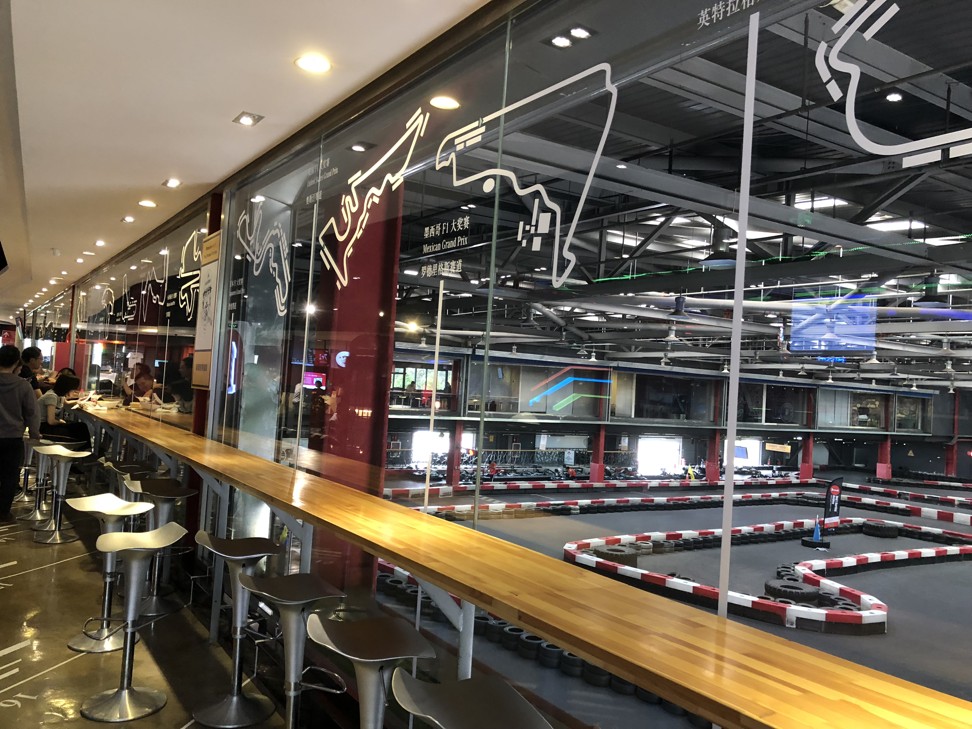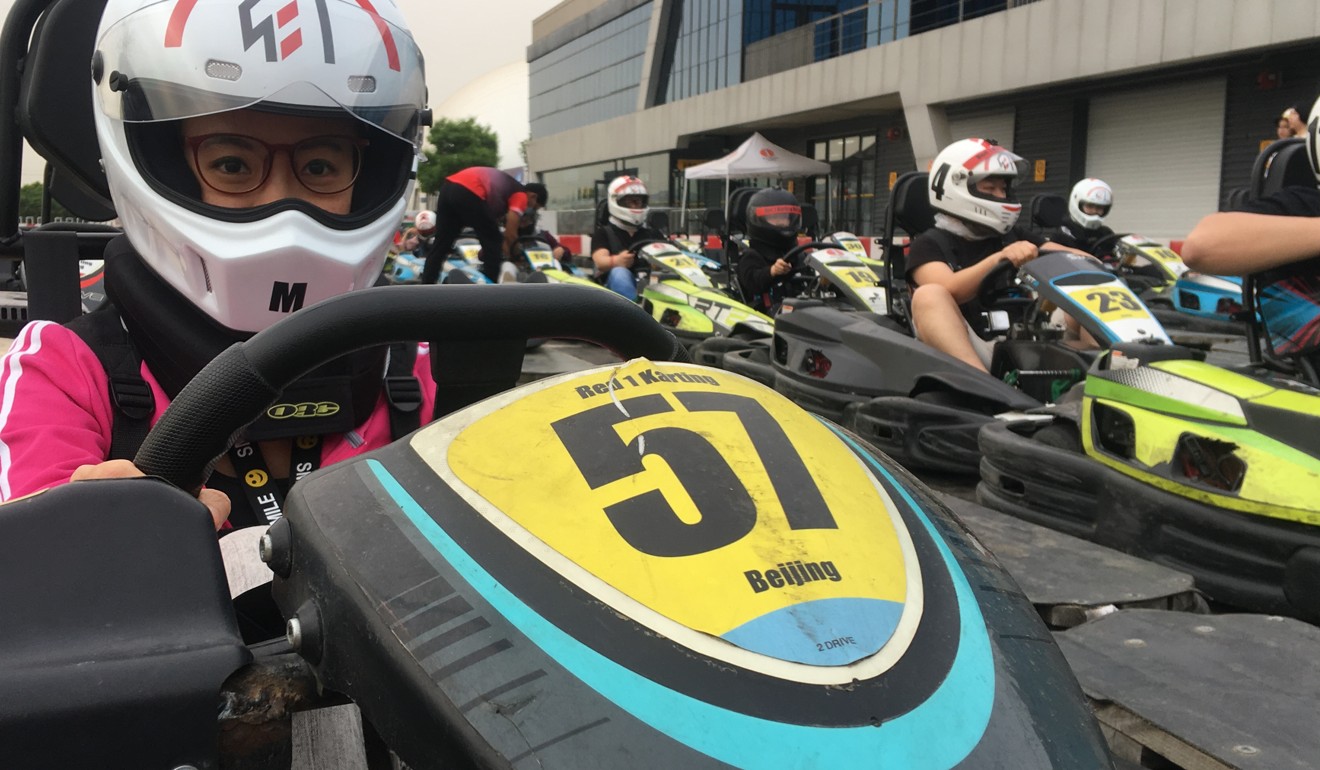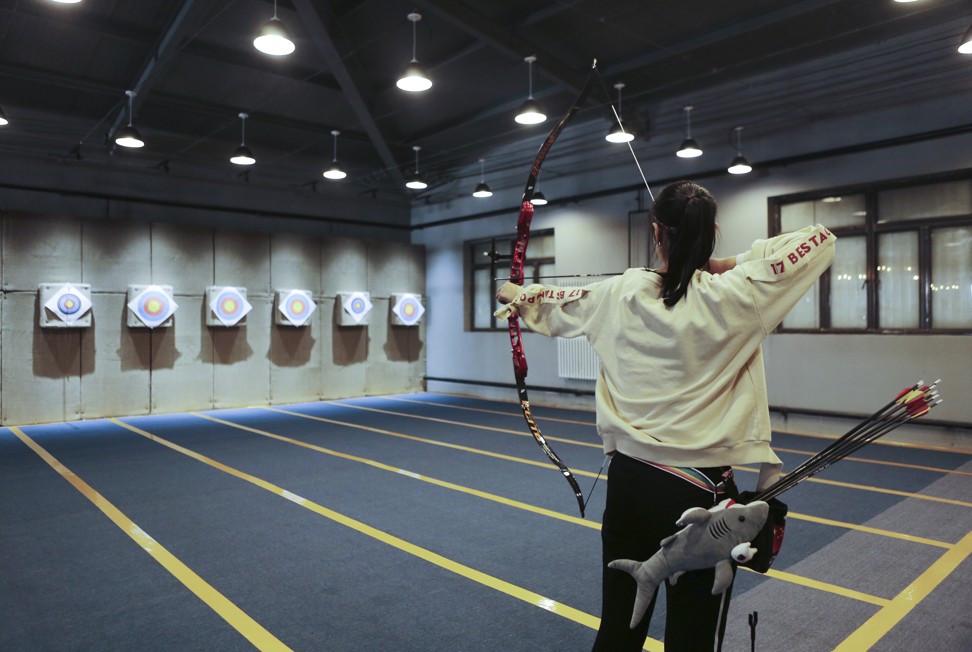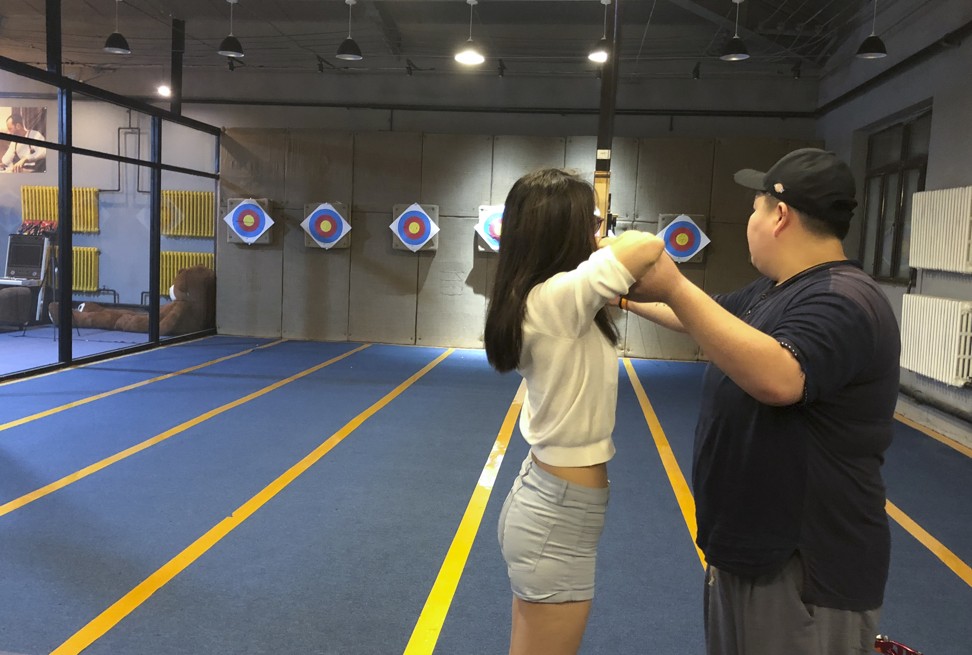
Three novel Beijing indoor sports venues where you can exercise this summer safe from the heat and pollution
Sports fanatics looking for something a bit different can choose from a trio of novel venues in China’s capital where you can spend time go-karting, doing archery or even skydiving in healthier conditions
While Beijing has awe-inspiring outdoor scenic spots like the Great Wall and the Palace Museum, the sprawling capital also offers many indoor entertainment and sports venues.
For those hoping to escape the city’s blistering summer heat and air pollution – and see whether they have a natural flair for some lesser-known sports – there are a number of options to try out.
The Post visited three stand-out venues that provide international-standard sporting facilities sheltered from the outside conditions. Here’s what we thought.

Red 1 Karting Beijing
Set up in 2014, Red 1 is the first go-kart venue in China to be accredited by the Commission Internationale de Karting (CIK-FIA) for kart racing. It has two tracks, indoors and out. The 5,000-square-metre (54,000-square-foot) indoor section’s tracks are changed every three months to offer drivers who are not daring enough to try the outdoor one some new experiences.
With a giant screen that shows racers’ rankings in the glass panelled lounge area overlooking the indoor track below, friends can compete with each other, while their companions with less derring-do can watch the race from the comfort of a restaurant and bar. The outdoor section has a 1.3km (0.8 mile) long track with 15 bends.
The China fitness club where music matters as much as muscles
James Khoo is general manager of Hongchang Jun, the company behind Red 1 Karting Beijing. He says the venue opened to help China nurture professional car racers.
“We are preparing the first-ever international kart racing competition, co-organised by us and the Federation of Automotive and Motorcycle Sports of China, to be held in April 2019,” he says.
While China is a giant in producing cars, car-related sports development lags behind other countries, he adds. Many world-renowned F1 formula racers started out racing karts.

In 2016, Hongchang Jun sponsored the first-ever rental kart racer from China – Han Wei – to compete at the Sodi World Series (SWS) in France, an annual global tournament of leisure karting races. The Sodi World Finals gather the best 280 kart drivers worldwide for a two-day competition that takes place in Australia, Canada, Dubai and Russia.
The contestants qualify by winning one of 3,000 qualifying competitions held in SWS partner tracks around the globe throughout the year. More than 30,000 leisure kart racers participate in the annual event.
For those who might want to compete, Red 1 offers individual and group training classes. A one-on-one full-day session costs 4,000 yuan (US$625). Taking part in a two-hour group class with 10 or more students costs 300 yuan.

Players who just want to have fun can try a seven-minute junior session indoors for 150 yuan. Sessions for children are also available. On the outdoor track, an eight-minute beginner session costs 150 yuan.
As my driving experience is limited to playing Super Mario Brothers games, I chose the outdoor double-seater kart (200 yuan) and asked my driver friend to take the steering wheel.
With the smell of petrol assaulting my nostrils, I screamed throughout the ride, begging him to slow down. With a safety helmet on, he could not hear my screams and pleas, and instead put the pedal to the metal. After a stomach-churning, interminable eight minutes, I felt a wave of relief when we were flagged to slow down and return to safety.
Red 1 Karting Beijing, 88 Laiguangying East Road, Chaoyang District, Beijing. Tel: 86 010 64306688
The Aviator Beijing Space Experience Hall
Until you see it, it is hard to imagine how indoor skydiving can be achieved. Opened in 2016, this hall has a wind tunnel 4.2 metres in diameter which whips huge blasts of air up from below. The effect helps users experience the sensation of flight without parachutes or planes.
The wind moves upwards at around 195km/h, thrusting the user skywards with their belly facing down.
The hall is the training venue for the People’s Liberation Army’s parachuters. The venue was set up after the world governing body for air sports, Fédération Aéronautique Internationale, listed indoor skydiving as an item on its list of global championships in 2014.
Indoor skydiving is under consideration for the 2024 Summer Olympics in Paris, so it is no surprise the sport is taking off in China, with at least five wind tunnels now open.
From wealth to health: China’s craze for fitness, and gym body selfies
On a weekend visit to the hall, the wind tunnels were popular with children. The experience lasts only a few minutes and costs 240 yuan, but that did not deter the many parents there from buying their children a ticket. With their faces distorted by the blasts of wind, the children I watched broke into big smiles once they were shot aloft. Of the 10 or so I saw, only one girl’s experience was interrupted by the instructor as her nervousness made her turn her body sideways.
After a brief training on how I should arch my body upwards, I donned earplugs and a helmet with a visor and stepped into the tunnel. With an instructor by my side to ensure I stay in the curved-up position throughout, I first hovered low near a safety net overlooking a huge cavern filled with machinery.

The ear plugs only muzzled a bit of the deafening sounds, while hot air assaulted my body from all sides. Then, the force of wind changed, and I was propelled upwards and dropped into a free-fall a couple of times. Compared with go-karting, the experience was not at all scary, and the joy of defying gravity and levitating is immense. One word of advice for those with long hair: tie it up before you try this. I did not, and my long tresses were tied in knots afterwards.
The venue also boasts other flight simulators and a gyroscope with three high-speed spinning rings for astronaut training.
The Aviator Beijing Space Experience Hall, Block 12, Shine Hills South Zone, An Tai Da Jie, Shunyi District, Beijing. Tel: 86 010 64828912

X Bow Field
If flying and racing are too much, the less adventurous can head to the recently opened X Bow Field which boasts shooting ranges up to 30 metres long. The 4,800 square metre indoor venue also boasts a basketball court, baseball training and snooker areas.
For 160 yuan per hour, I tried the 18-metre shooting range under the guidance of Li Mingran who was an archer in the China national team. I wore gear to protect my middle finger and arm, but my hand was tired after shooting only a few arrows, none of which hit the target. Li said beginners are provided with a 16-pound (7kg) wooden recurve bow.
“It’s a bit heavy. But for beginners, it’s better than a composite bow. Most people like to use a composite bow, which has a magnifying glass for easier shooting. If beginners can handle the more difficult recurve bow, which requires more skill, they can advance faster later,” he explains.

The 22-year-old says a novice should aim to take about 10 one-on-one lessons within a month. “They will forget the skills if they come too infrequently,” he says.
Would-be archers can buy their own bow costing from 5,000 to 8,000 yuan, and titanium arrows costing 300 yuan apiece.
“Titanium made arrows won’t swerve. They are faster and more stable then cheaper versions,” Li says.
The venue also has a play area where archers shoot sponge-headed arrows at each other and take cover behind big cushions.
Fitness fanatics the real winners of Apple’s new software feature
Retiring from the national team two years ago following an injury, Li says archery can help develop concentration, proper posture and eyesight.
Li says he caught the attention of a sports scout at the age of eight, due to his stout stature. “I have loved the sport ever since, as it’s quiet, and hitting the target gives me great satisfaction.”
X Bow Field, Jingzhou Group Industrial Zone, Yile Nan Jiē, Tongzhou District, Beijing. Tel: 010 80812699

